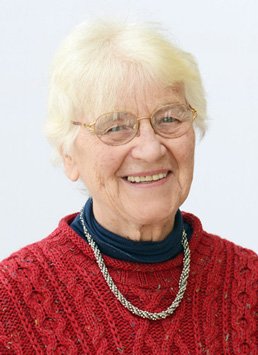Society for the Study of Women Philosophers, Inc.
a non-profit, tax-exempt educational charity 501(c)3 Internal Revenue Code
Gertrude the Great
1256-1301/2
Religious Epistemology
|
Kate Lindemann's Women Philosophers pages |
 |
Remember!! Your purchase of books by clicking on Abe Books or Amazon links through this site earns us a small commission that is used to provide travel scholarships. |
Gertrude the Great, Cistercian nun, philosopher and member of the famous Helfta monastery
Chronology
1256 She was born on January 6, 1256.
1261 At the young age of 5 years she goes to Helfta, a monastery known for its education and spiritual ardor. The Abbess at the time was Gertrude of Hackerborn a woman who ensured that both spiritual and intellectual life flourished.
- The child Gertrude was put in the care of Mechthilde, the sister of the Abbess who was head of the school associated with the monastery (alumnate). (At that time many communities of nuns were the main teachers and educators for girls in the region surrounding their community.) The young students shows real aptitude as a scholar and she enjoys the intellectual life. Over time a real friendship developed between the two women.
1266 She transfers from the school to the monastic community, of which she became a member. She take the vows of a monastic nun.
1282 Gertrude the Great experiences the first of a series of visions that continued throughout her life. Around this time she begins to leave off some of the secular studies and concentrates more and more on the study of divine wisdom. She left the study of 'grammar' and spent more time and energy on the Scriptures, patristic writings and theology.
Over the next years Gertrude the Great writes simplified versions of difficult scriptural passages. She also compiles books with the sayings of the saints. She appears to have become a spiritual director for some of the nuns and she offered advice and guidance through letters to those outside the monastery.
It might be of interest to know that she wrote in both German and Latin. The use of the local Germanic language is of importance to her.
1291 Gertrude of Hackeborn, the Abbess, dies
1298 Mechtilde, her mentor and friend dies.
1301 (or 1302) Gertrude the Great dies at Helfta on November 17, in 1301 or 1302
1346 The monastery (the New Helfta) is transferred to Trud-Loster within the walls of Eisleben. It appears that the old cemetery is not moved and so these the great women mystics and scholars are not buried at the current > Helfta monastery
1677 Gertrude was included in the Roman Martyrolgy (considered a saint in Roman Catholic Church) and she was named the Patroness of the West Indies. Her feast day receives great celebration in Peru.
.
Writings of Gertrude the Great
Few writings are still in existence. We do have::
- The "Exercises of St. Gertrude"; (Spiritual Exercises )- this treatise has 7 "Exercises" is a contemplative work. some
- The "Legatus Divinae Pietatis" (Herald of Divine Love) - which contains her life and many of the divine favors which she experienced. Gertrude only wrote Book II of this treatise. The rest was written by members of the community. The full text is available on line. It begins with the advertisement and continues through the rest of the text at Ger Herald of Divine Love Again, it should be repeated that Gertrude only wrote Book II of this treatise.
- The "Liber Specialis Gratiae" of St. Mechtilde. - It appears that Gertrude is the main, if not the only author of this work.
Society for the Study of Women Philosophers